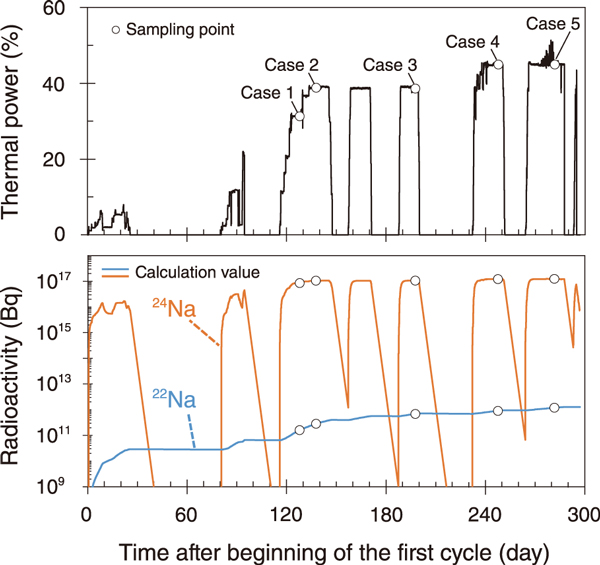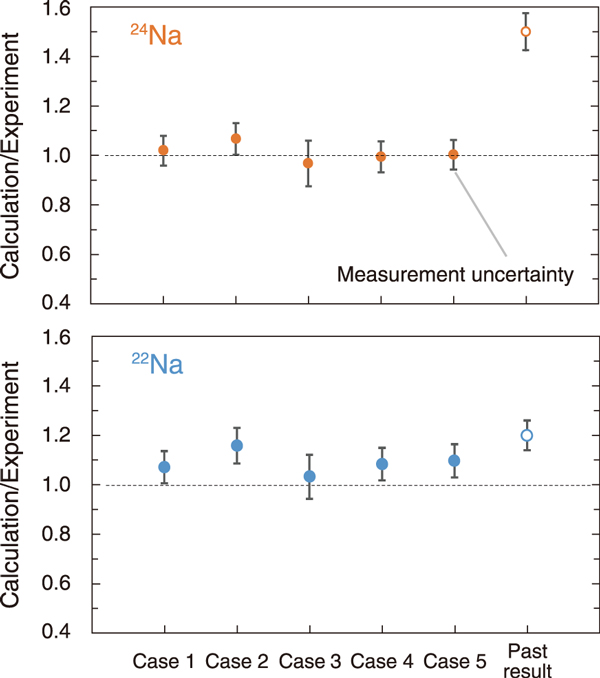
Fig.1 History of the thermal power operation, primary sodium sampling, and trend of sodium radioactivity

Fig.2 Comparison of experimental and calculated results of sodium radioactivity
The JAEA has been constructing an experimental database of reactor physics data obtained in the sodium-cooled prototype fast breeder reactor Monju for validating fast-reactor design methodologies and nuclear data.
The sodium coolant in the fast reactor is activated by reactions with neutrons during reactor power operation. 24Na (half-life:15 h) and 22Na (half-life: 2.6 years) are produced by 23Na(n,γ) and 23Na(n,2n) reactions, respectively. 24Na is a major γ-ray source in the primary coolant during the power operation, and 22Na is an important γ-ray source at the plant shutdown state in terms of dose during maintenance work and waste management. In the Monju design, a factor of 2.0 was considered as the design margin for estimating radioactivity based on limited validation data on sodium radioactivity available at the time of designing.
In the Monju, the sodium radioactivity was measured during the system startup test in 1995 (Fig.1). The total radioactivity was evaluated from γ-ray measurements of sodium samples taken from the primary cooling system, and the total primary sodium inventory. The evaluated radioactivity was compared with the calculated values with a discrepancy of over 40% as shown in Fig.2. In this study, the validity of the existing results were examined for the experimental and calculated data.
Among the measurement data, the detector efficiency could not be examined since sufficient information was not available in the measurement data. Although more than 20 years have passed since the power operation, 22Na with the long half-life can still be detected. Then, the radioactivity of 22Na in the primary cooling system was re-measured, and the radioactivity at the time of the test was evaluated by considering the time decay of the radioactivity. In the core calculation, the three-dimensional model transport calculation with JENDL-4.0 was applied. In addition, the thermal power history was reflected in the radioactivity calculation with as much detail as possible. Thus, the discrepancy between the experimental and calculated values decreased (Fig.2). For 22Na, incorporating the neutron capture effect of 22Na itself into the radioactivity calculation is expected to lead to further improvement.
The present study established reliable experimental data for sodium radioactivity. Based on the present evaluation, the design margin factor of the sodium radioactivity can be reduced from 2.0 to 1.1. The achievements of this study will contribute to the rationalization of the fast-reactor shielding design.
(Tetsuya Mouri)